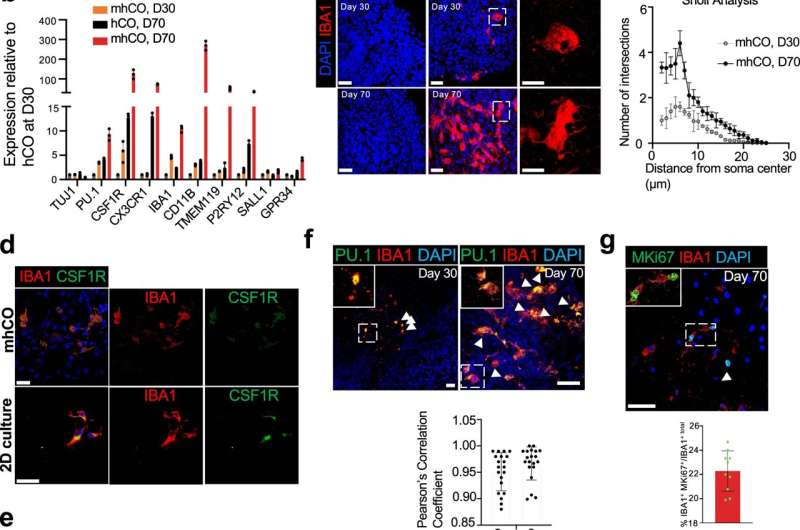Ally and enemy? Scientists explore immune cell suspect in Alzheimer's disease

As scientists search for the roots of Alzheimer's disease, they have had a hard time determining whether microglia, an immune system cell crucial to brain development and maintenance of the adult brain, is a friend or foe.
Evidence shows that a lack of microglia contributes to accumulation of amyloid plaques, a hallmark of Alzheimer's. Alternately, an excess of microglia has been implicated in the destruction of neurons and brain synapses which also characterizes neurodegeneration in the disease.
Now, Yale researchers have developed a way to tease out factors that may determine which of those roles microglia might play, they report in the journal Nature Communications.
"All microglia we possess as adults are created before we are born," said In-Hyun Park, associate professor of genetics at the Yale Stem Cell Center. "Microglia are crucial in neurogenesis because they do the synaptic pruning that allows neurons to communicate properly."
In adult brains, they act as a kind of cellular trash collector, identifying and disposing of debris from dead neurons.
But microglia have been a challenge to study because they form soon after conception and migrate quickly to the developing nervous system. Once they find a home in the developing brain, microglia are cut off from most interaction with other parts of the body by the blood-brain barrier, which protects the brain from pathogens. Dysfunction of microglia has been associated with neurodevelopmental and neurodegenerative diseases, but studying the link has been difficult due to the limited models of the human brain.
For the new study, Bilal Cakir and Yoshiaki Tanaka from Park's lab developed a method to generate functional microglia in human cortical organoids, which are small, three-dimensional replicas of the developing brain formed from early-stage stem cells. In laboratory tests, they identified an active gene created very early in development that is crucial to the birth of microglia. They were then able to activate the gene to coax the creation of microglia in the brain organoid.
In preliminary experiments, they found organoids lacking microglia were susceptible to accumulation amyloid, a protein that forms plaques linked with Alzheimer's disease. But organoids with functioning microglia were not. The findings suggest that in this case microglia play a protective role.
The organoids can be used to study effects of other genes linked to the development of Alzheimer's, the researchers said.
More information: Bilal Cakir et al, Expression of the transcription factor PU.1 induces the generation of microglia-like cells in human cortical organoids, Nature Communications (2022). DOI: 10.1038/s41467-022-28043-y


















